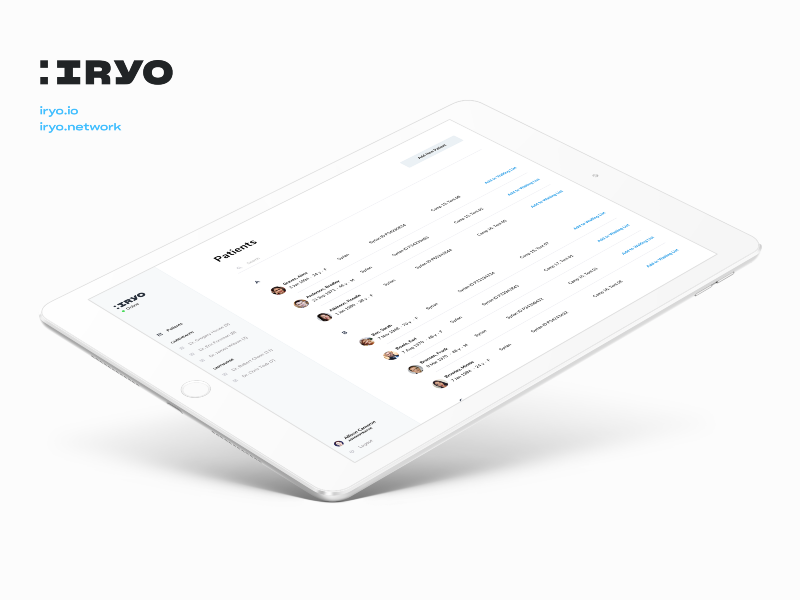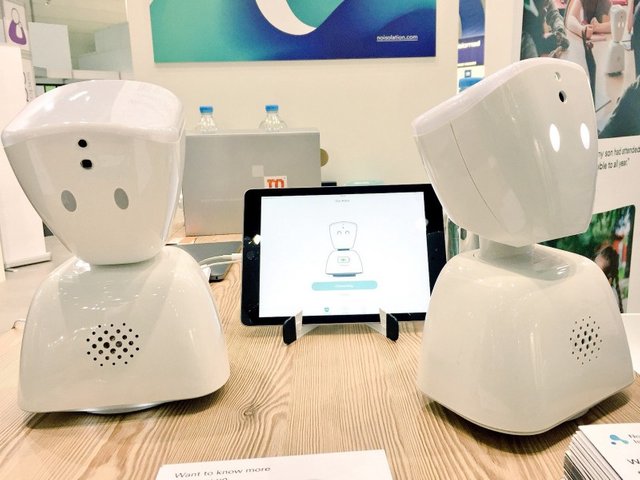As a patient, I hope for the constant improvement of the healthcare industry.

Today, children can communicate in real-time with their schoolmates, as well as their teachers in some cases, through a variety of messaging apps and social media platforms. Additionally, the use of avatars and educational robots are becoming commonplace in classrooms. Advances in monitoring devices and changes in clinical practices are redefining the requirements for hospitalization. Increasingly, patients can spend more time recovering in the comfort of their own home and visit hospitals or clinics for common check-ups.

Convenience and unintended consequences of technology
I was diagnosed with IBD at 14. Healthcare has been a big part of my life ever since. Managing a chronic condition is time and thought consuming. You have to constantly arrange a variety of appointments across many different institutions, spend time in waiting rooms and wait for results and medical feedback. Luckily, technology is decreasing the disease burden on many levels. Point-of-care devices, telemedical solutions and healthcare platforms are improving communication and reducing time spent in healthcare institutions.
While innovation is making care more effective, addressing the human aspects remains a challenge. Technology, for better or worse, has directly affected the way we traditionally interact with one another.
Today, nurses from the Children’s hospital tell me, patients socialize less because they have smaller, more private rooms in the hospital. Patients have more privacy, but the ward is less lively and becoming increasingly more isolated. How to keep empathy as a primary focus during care is an important question that needs to be addressed.
Inconvenience of the current IT solutions
Despite a lot of progress around the development of apps for health, wellbeing, and healthcare (there are currently more than 350.000 mHealth apps in the App Store), communication tools, electronic health records, and other IT solutions are too often a barrier between the patient and the doctor. A doctor spends more time looking into the computer screen than in the patient’s eyes during the visit. Additionally, the awareness of the number of patients sitting in the waiting room in front of the office creates stress. How can you be attentive and emphatic under such conditions?
Additional challenges can occur from the use of outdated and improper IT equipment. A few examples:
A doctor tries to write an electronic prescription but cannot, because the computer freezes.
A doctor wants to look into a patient record and the system suddenly requires an update that prevents him from gaining access.
Due to limited access to resources, such as available computers or other equipment, a doctor writes a prescription on paper instead of issuing an electronic version.
Doctors feel burned out, which was one of the highlighted topics at last years global Health 2.0 conference in Santa Clara in the US.
What should a good IT system look like?
All of the mentioned barriers pose a challenge for IT providers. Future visionaries within this space must have deep technical knowledge while keeping the philosophy behind healthcare and the patients needs always in mind. This delicate balance requires:
The accurate observation of current workflows,
understanding how to best optimize processes by leveraging new technologies,
the effective design of solutions that ease medical staff workload, in conjunction with being useful for data gathering purposes,
identifying early adopters and considering the best approach for wider implementation of solutions,
be aware of potential lack of resources for new hardware in public systems and developing countries, making software use suboptimal,
knowing what will motivate and incentivise current healthcare workers to adopt and utilize new technology.
New platforms, new data, new problems and blockchain
While new digital health solutions, devices and platforms carry potentially meaningful data, they are often separate from institutional electronic health records. Sometimes for a good reason, if consumer applications are not clinically validated and additional data can bring more noise that signal.
In the States, where healthcare system is private, more market-driven than in Europe, medical institutions are leveraging from innovation and digital health solutions more. By encouraging their doctors to be creative, they have all the resources to create clinically validated apps and platforms. If these new solutions succeed, they create a new revenue stream to the medical institution. They can improve patient care and lower costs.
Increasing the quality of care is tightly connected to the data gathered from these institutions. If data formats are effectively used, data gathering and data analysis can lead to better treatment decisions. Proper data analysis will hopefully lead to crucial discoveries around the root causes, not just the triggers, of diseases. This will eventually speed up the time it takes to find cures for current and future diseases.
However, connectivity and interoperability among institutions and platforms is still far from an optimal state.
Blockchain solutions are offering new opportunities that can help address some of these issues. More than 40 projects utilizing blockchain technology in healthcare have been started in the last two years. Their ultimate goals are to assist in redefining access to healthcare, health insurance, efficient treatment, increasing transparency and protecting patient data.
“Innovation, when done right, will make technology invisible.”
As a former journalist and podcaster, I constantly research and follow how different medical experts and creative specialists around the globe think, how different healthcare systems work and how they approach innovation.
It is clear that there is no one size fits all solution to solving the issues related to healthcare IT. There are just too many varieties of healthcare systems, payment models, culture, patients and doctors. But one can always learn from best practices.
This thought — “Innovation, when done right, will make technology invisible,” stuck with me most this year during an interview with Rasu Shrestha, CIO of UPMC (University of Pittsburg Medical Center). It is a thought reflecting what is needed for doctors to reclaim time for their patients and patients to reclaim time to live. In some respects we are already there: ingestible, implantable, surroundable sensors and implantable drug release mechanisms are what allows chronic patients to forget about their disease.
Iryo
I was invited to join a new healthcare company, Iryo, during its inception in autumn of 2017. The idea of building healthcare IT with a better user experience was one that I could definitely relate to and fully support. After all; I will be stuck in the healthcare system on a regular basis for the rest of my life. Instead of complaining about it, I am motivated to be part of the solution.
Iryo aims to have a global impact, however, the aspect that inspired me most was the paradigm shift around a patient being able to leverage and manage their own medical data, thanks to blockchain technology and token economy.
In the Iryo system, you as a patient decide who will and who won’t have access to your medical data. If a researcher wants to use your data, you get incentivised to open the medical record through the use of tokens. Then you can use those tokens inside the Iryo network.
Patient centered data leverage
By sharing data on my chronic disease, I can benefit from tokens. On a personal level, this incentive can improve my healthcare treatment and outcomes. And on a global level, this data sharing with researchers can contribute to new scientific discoveries.
Blockchain is promising for healthcare because it solves a fundamental problem of trust among stakeholders. Where could that be more promising than in the area as personal and sensitive as health?
ICOs are becoming more and more regulated, at the same time becoming a regular new form of fundraising and a new enabler of big-thinking solutions. It is a crowdfunding model that is inclusive, looking at ideas with a global impact. This new model is inspiring as it requires a global approach to collaboration. In the end, success is truly dependant on: teamwork, collaboration and out-of-the box thinking to invent better solutions. This is what we are bringing to healthcare.
Check future of healthcare https://www.iryo.network
For a better visibility of your post, you should:
Have a nice day, Thierry